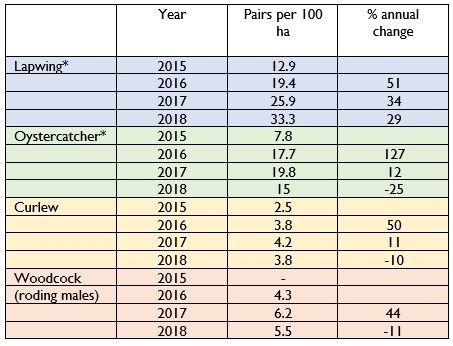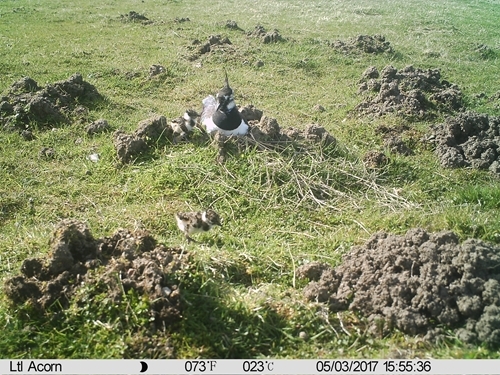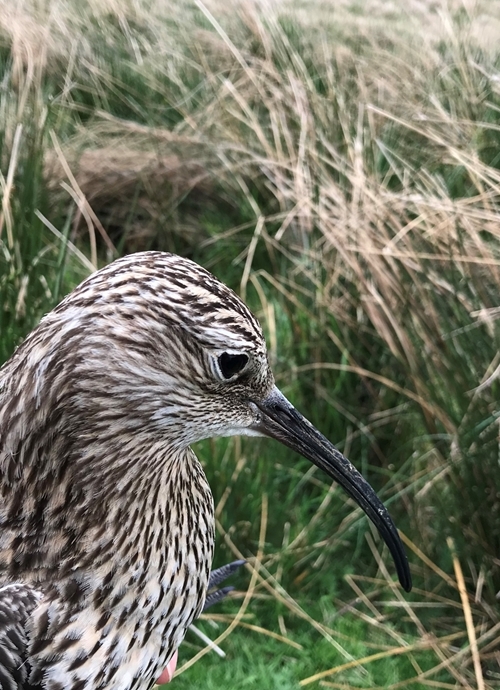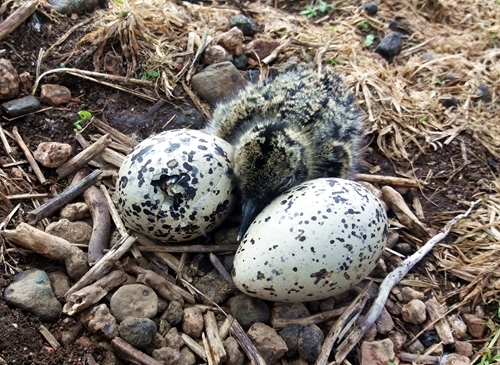This year has been another hectic and exciting one for those of us studying the breeding wader population at GWSDF Auchnerran. The counts of returning pairs, conducted by Marlies and our students, Grace and Minna, suggested a mixed bag with lapwing showing further signs of increase in number whilst the other three main species that we can monitor relatively easily (oystercatcher, curlew and woodcock) declined slightly on last year’s figures (Table 1). That said, densities are still relatively high: both lapwing and oystercatcher are present at nationally significant numbers.

Table 1. Breeding wader counts at GWSDF Auchnerran since our tenancy began.
The cause of the changes in numbers is unclear. 2015 and 2016 were baseline years when we were monitoring biodiversity but not changing too much on the farm, and since then some changes to a small number of fields have taken place (reseeding and liming), and grazing pressure from sheep has likely increased in some key fields too (simply because the improved fencing on site has kept the sheep where they are meant to be!).

“Lapwing and chicks at the nest site. Credit GWCT”
Some of the changes may have made breeding fields less attractive, whilst perhaps also increasing food resources, especially outside of the breeding season (we certainly see more lapwing on the farm on-and-off through the winter). Hopefully time will help elucidate these complex patterns.
2018 saw a very exciting addition to our wader work at Auchnerran too. With the help of Andy Hoodless, Head of the Wetlands team, we have begun tagging both lapwing chicks and adult curlew. We hope this will tell us what determines the survival rates of lapwing chicks and how they use the habitats on the farm – again essential information when trying to assess how farm management might affect the birds.

“Adult male curlew tagged in spring 2018. Credit Dave Parish”
Tagging of the adult curlew – using tags that allow us to remotely follow the birds both on the farm and when they leave for the winter – will help us understand the challenges this most threatened of species faces and how we at Auchnerran might be able to help. A total of seven lapwing chicks were tagged of which three were not found again. Of the remaining four, three fledged whilst one was eaten by a raptor. We only managed to catch and tag one curlew – an adult male, and he survived, successfully reared at least one chick and then travelled to Ireland for the winter. We eagerly await his return!

“Oystercatcher nest at various stages of hatching. Credit Marlies Nicolai”